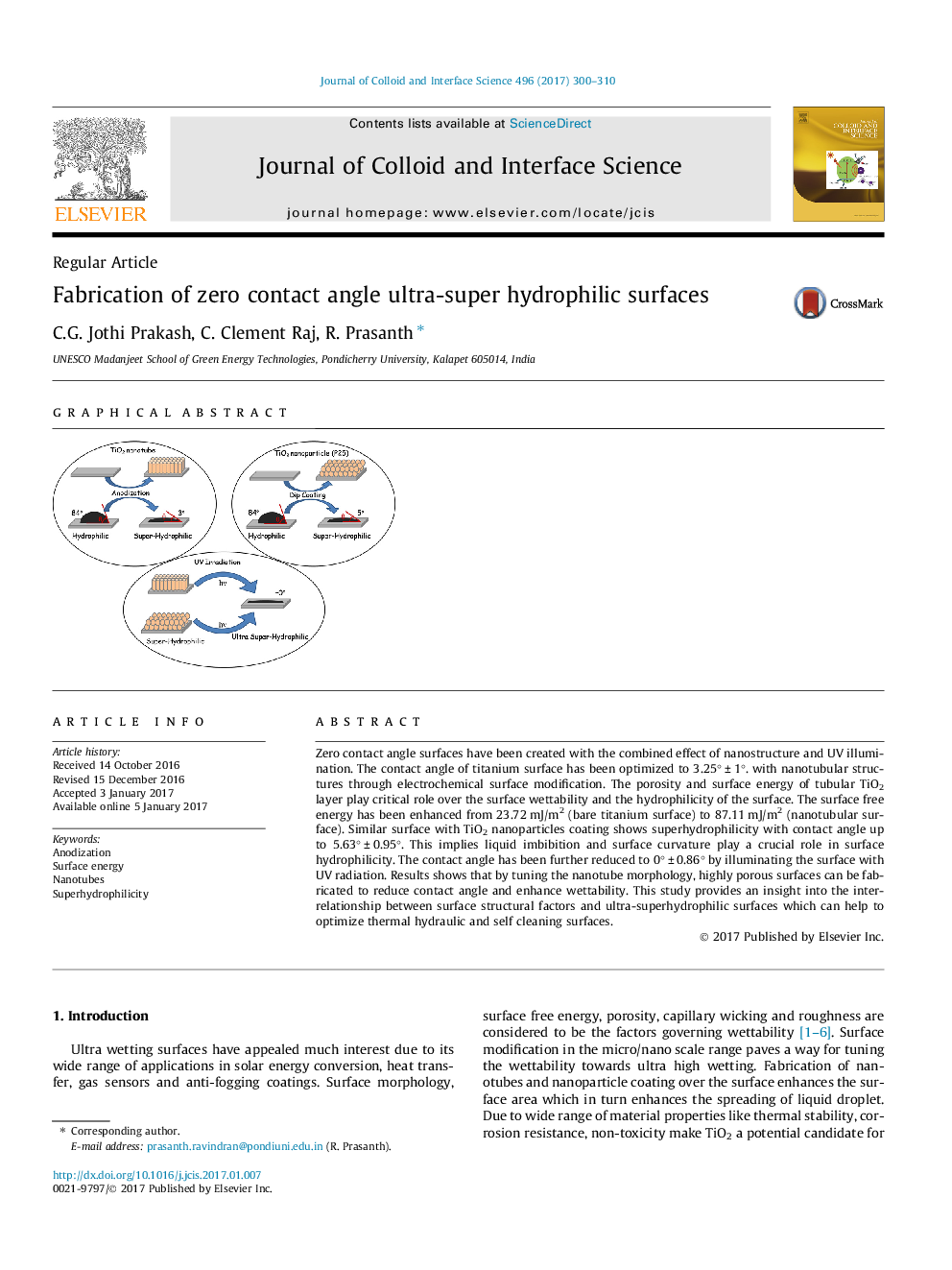| Article ID | Journal | Published Year | Pages | File Type |
|---|---|---|---|---|
| 4985102 | Journal of Colloid and Interface Science | 2017 | 11 Pages |
Zero contact angle surfaces have been created with the combined effect of nanostructure and UV illumination. The contact angle of titanium surface has been optimized to 3.25° ± 1°. with nanotubular structures through electrochemical surface modification. The porosity and surface energy of tubular TiO2 layer play critical role over the surface wettability and the hydrophilicity of the surface. The surface free energy has been enhanced from 23.72 mJ/m2 (bare titanium surface) to 87.11 mJ/m2 (nanotubular surface). Similar surface with TiO2 nanoparticles coating shows superhydrophilicity with contact angle up to 5.63° ± 0.95°. This implies liquid imbibition and surface curvature play a crucial role in surface hydrophilicity. The contact angle has been further reduced to 0° ± 0.86° by illuminating the surface with UV radiation. Results shows that by tuning the nanotube morphology, highly porous surfaces can be fabricated to reduce contact angle and enhance wettability. This study provides an insight into the inter-relationship between surface structural factors and ultra-superhydrophilic surfaces which can help to optimize thermal hydraulic and self cleaning surfaces.
Graphical abstractDownload high-res image (74KB)Download full-size image
